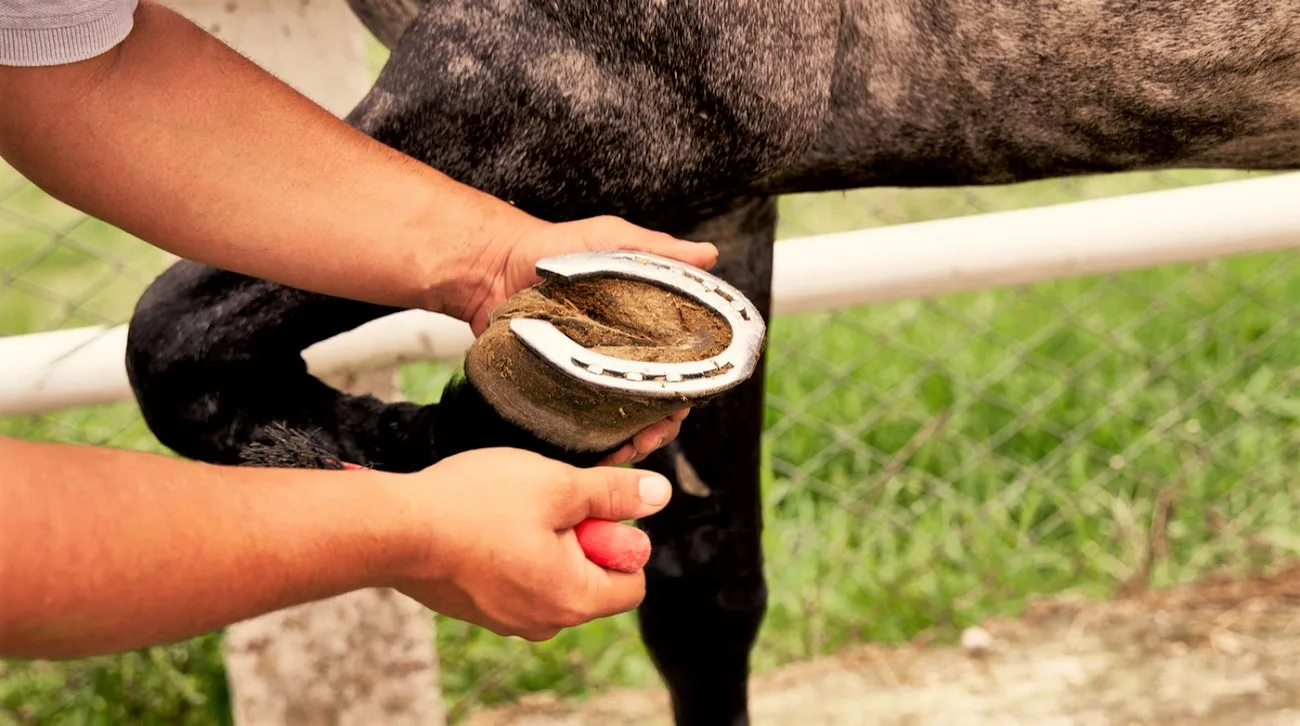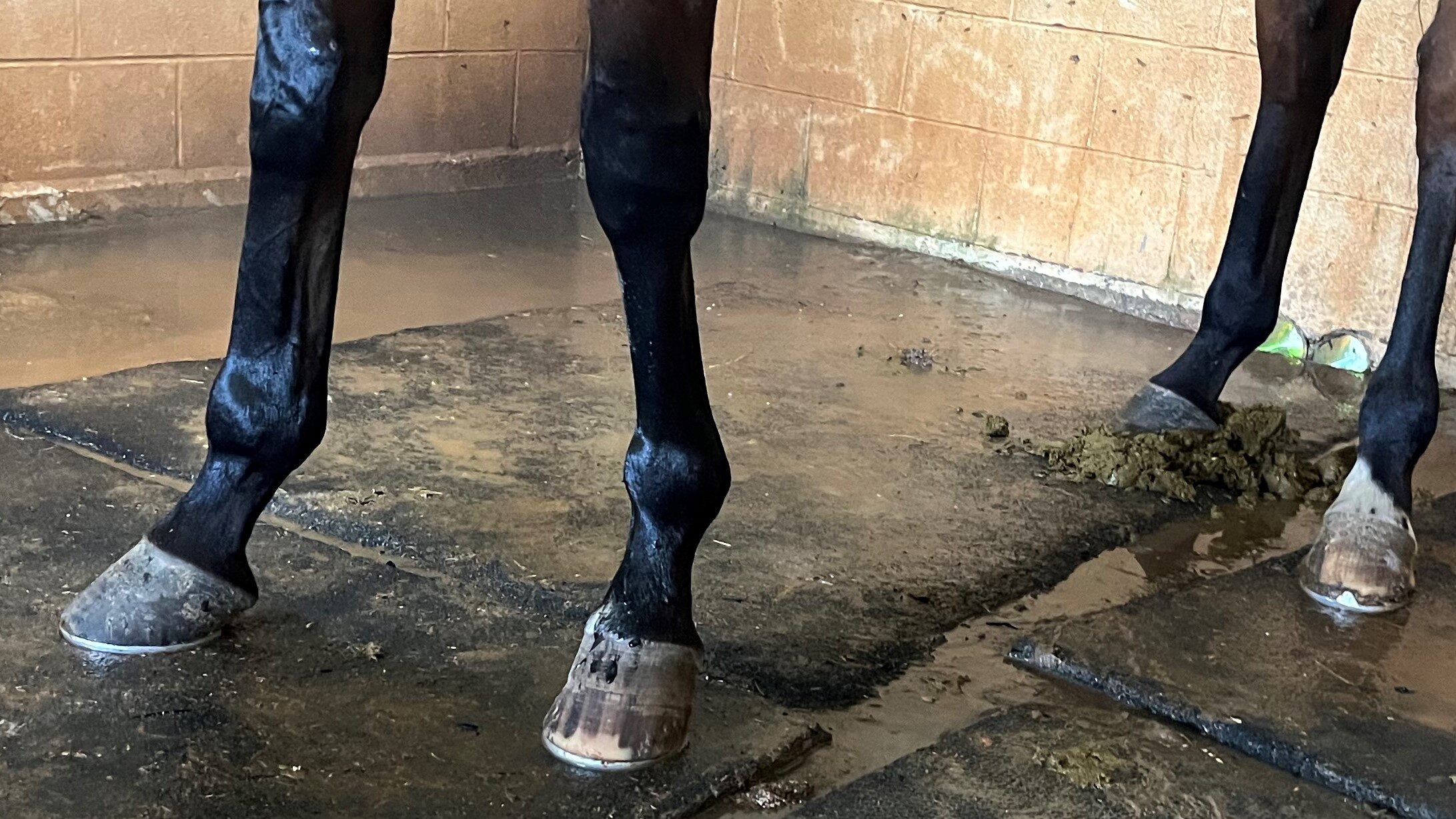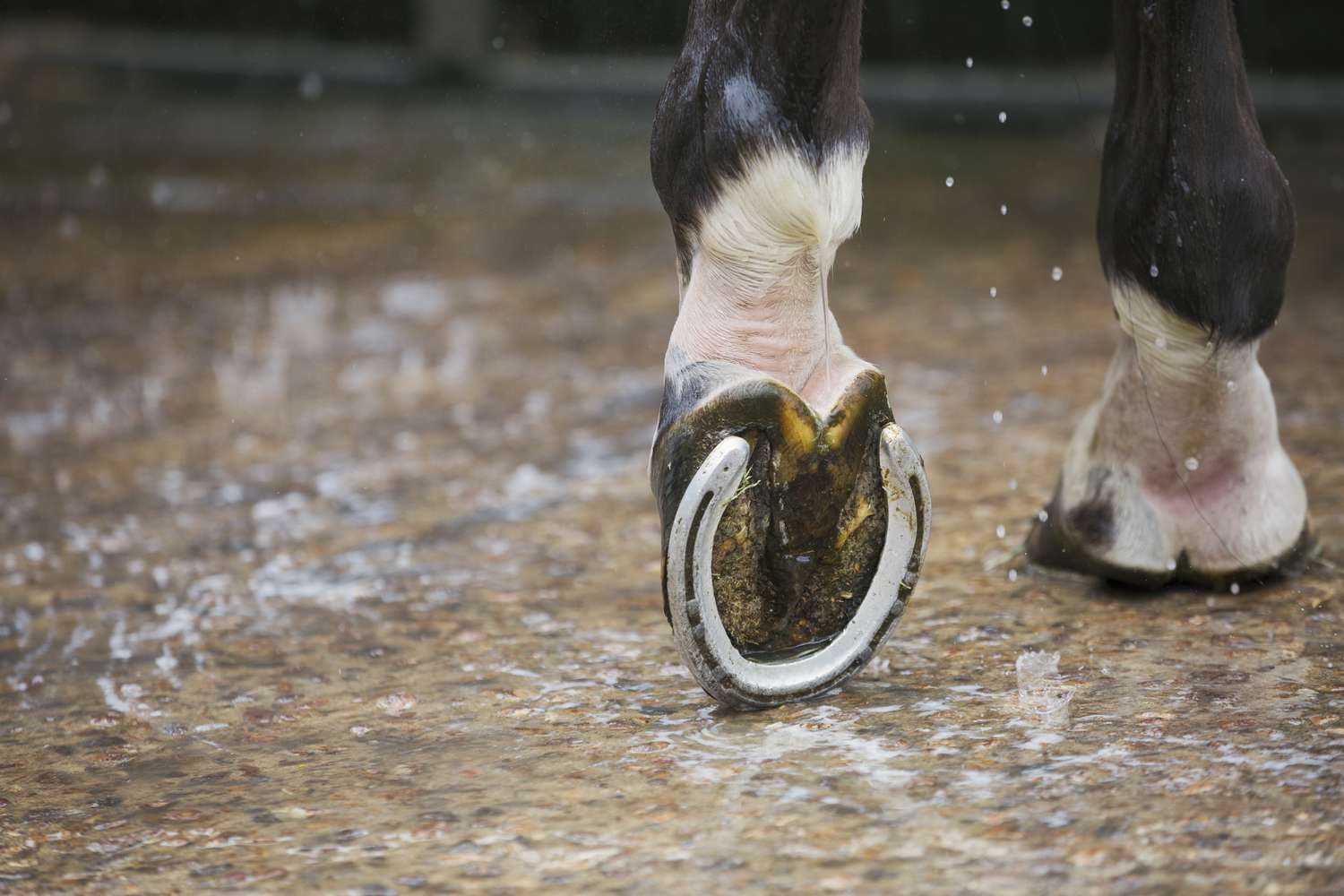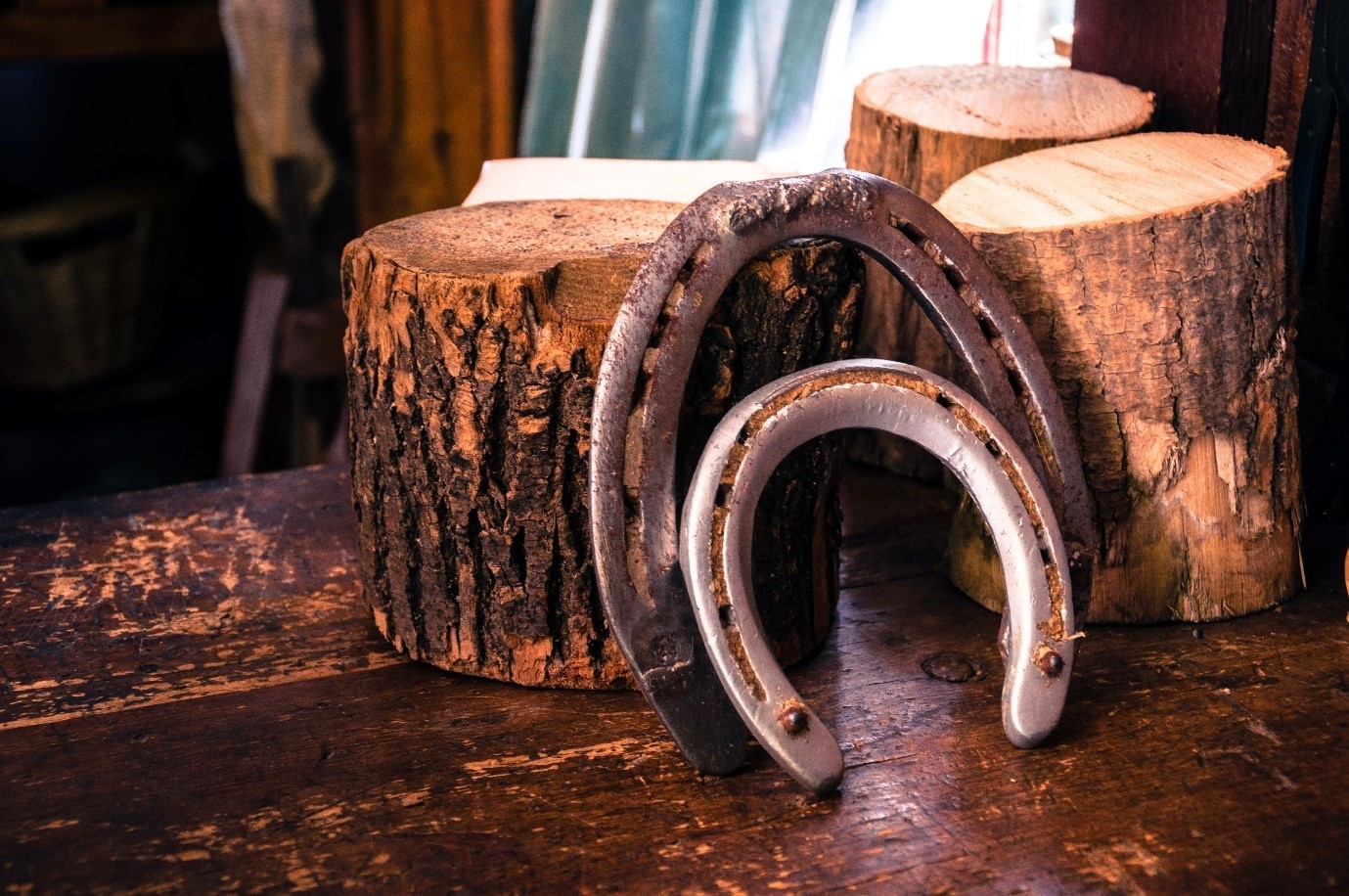Shoeing a horse is an important part of horse care, providing protection for the hooves and improving the horse’s performance. In this article, we will explore the reasons why shoeing a horse is important and outline the steps involved in the process.
History of Horseshoeing

Horseshoeing has been a part of horse care since ancient times. The earliest evidence of horseshoeing dates back to around the fourth century BC, when iron horseshoes were used in Greece to protect horses’ hooves from wear and tear. In the Middle Ages, horseshoes were used in Europe and the Far East to protect horses from the rocky and rugged terrain.
In the 16th century, horseshoeing began to become more common in Europe and the Americas, as well as in the Far East. At this time, horseshoeing was mainly used to protect horses’ hooves from the hard ground, as well as to prevent them from slipping. The use of horseshoes also became more widespread in Europe and the Americas in the 19th century, as the technology used to make horseshoes improved.
| Period | Location | Purpose |
|---|---|---|
| 4th Century BC | Greece | To protect horses’ hooves from wear and tear |
| Middle Ages | Europe and Far East | To protect horses from the rocky and rugged terrain |
| 16th Century | Europe and Americas | To protect horses’ hooves from the hard ground, and prevent them from slipping |
| 19th Century | Europe and Americas | Improvement of horseshoe technology |
Today, horseshoeing is used to protect horses’ hooves from wear, as well as to improve their performance in competition. Horseshoes come in a variety of shapes and sizes, and can be made from metal, plastic, or rubber. The type of horseshoe chosen for a particular horse depends on the horse’s activity and the condition of its hooves.
Horseshoeing is an important part of horse care, and it is important for horse owners to make sure their horses are properly shod in order to keep them healthy and performing at their best.
The Benefits of Horseshoeing

For centuries, horseshoeing has been an important part of horse care and maintenance. It is a specialized skill that requires a trained professional to ensure a horse’s hooves are healthy and protected. Here are three key benefits of horseshoeing:
Improved Comfort
- Horseshoes provide cushioning and support to the horse’s feet, which can help prevent fatigue and soreness.
- Horseshoes also help to protect the horse’s feet from rocks, stones and other hazards that can cause injury.
- Horseshoes also help to distribute a horse’s weight more evenly, which can reduce the risk of strain and injury.
Enhanced Performance
- Horseshoes help to reduce friction, which can help improve the horse’s ability to move more quickly and efficiently.
- Horseshoes also provide extra traction, which can help a horse maintain balance and control when maneuvering around obstacles.
- The cushioning provided by horseshoes can also help a horse’s muscles to relax, which can help improve the horse’s overall performance.
Reduced Injury Risk
- Horseshoes help to protect the horse’s feet from injury, which can help reduce the risk of serious injury or lameness.
- Horseshoes help to reduce the risk of infection, which can help to keep the horse healthy.
- Horseshoes also help to reduce the risk of overstretching, which can help to reduce the risk of tendon injury.
Horseshoeing is an important part of horse care and maintenance. By taking the time to have a horse’s hooves regularly shod, owners can enjoy the comfort, performance, and safety benefits that come with it.
The Benefits of Shoeing a Horse

Shoeing a horse is an important part of horse care and maintenance. It helps protect their feet from damage and provides them with better traction and grip when running or walking. Shoeing can also help alleviate pain associated with certain conditions and diseases of the feet.
Types of Horse Shoes
- Steel Shoes – Steel shoes are the most common type of horseshoes and are made from iron or steel. They are very durable, but can cause the horse some discomfort if not fitted properly.
- Aluminum Shoes – Aluminum shoes are lightweight and provide better traction than steel shoes. They are often used in races and on horses that perform at a higher level.
- Plastic Shoes – Plastic shoes are designed to provide cushioning and shock absorption to the horse’s feet. They are often used on horses with sensitive feet or horses that have foot problems.
- Glue-On Shoes – Glue-on shoes are designed to be attached to the horse’s hooves without the need for nails. They provide good traction, but may not be as durable as other types of horseshoes.
Shoeing a horse is not only about protecting their feet, but also about providing them with the best possible performance. Different types of shoes provide different levels of protection and traction, so it’s important to choose the right type for your horse’s needs.
How to Shoe a Horse

Shoeing a horse is an important part of horse care, as it helps protect the horse’s hooves from wear and tear. It’s important to know the basics of how to shoe a horse if you plan on doing it yourself.
Preparation
- Gather the necessary tools, such as a hoof pick, hammer, anvil, nails, and a rasp.
- Make sure the horse is comfortable with being handled and make sure there is enough room to work.
- Clean the horse’s hooves with the hoof pick.
Measuring and Fitting
- Measure the horse’s hooves to select the right size of shoes.
- Check the fit of the shoes, making sure they are not too tight or too loose.
- Mark the hooves with a pencil to show where the shoes should be placed.
Final Adjustment
- Hammer the shoes into place, making sure the fit is secure.
- Use the rasp to even out any rough edges that may be present.
- Check the fit of the shoes one last time before allowing the horse to walk.
Regular Horseshoe Maintenance

It is important to regularly maintain horse shoes in order to keep a horse’s feet healthy and safe. Regular horseshoe maintenance includes the following:
- Inspecting the horse’s feet and hooves for any signs of cracks, chips, or other damage that may need to be addressed.
- Trimming the hooves and rasping the edges to make sure they are balanced and the horse is not suffering from any pain or discomfort.
- Cleaning and polishing the hooves to ensure that the horse’s feet are free from dirt, debris, and moisture.
- Applying a protective layer of hoof oil or balm to the hooves to help protect them from the elements and maintain their condition.
- Checking the horse’s shoes for proper fit and making adjustments as necessary.
- Replacing worn or damaged horseshoes with new ones.
By regularly maintaining horse shoes, owners can help to ensure that their horses remain healthy and safe. Regular horseshoe maintenance will also help to extend the life of the shoes and protect the horse’s feet from any potential damage or injury.
Cost of Horseshoeing
The cost of horseshoeing varies depending on the type of horseshoe used, the complexity of the trimming and shoeing needed, and the size of the horse. Generally, a basic shoeing job will cost between $50 and $70, while more complex shoeing jobs can range from $110 to $150.
| Horseshoe Type | Cost |
|---|---|
| Basic | $50 – $70 |
| Complex | $110 – $150 |
The cost of horseshoeing can also vary depending on the area of the country in which you live. Horseshoeing prices in rural areas may be lower than in urban areas, due to the lower cost of labor. It is also important to consider that a farrier may charge more for additional services such as nail-pulling, trimming, or therapeutic shoeing.
Frequently Asked Questions
1. What are the benefits of shoeing a horse?
Shoeing a horse offers a variety of benefits, from protecting the health and comfort of the horse, to improving performance. Some of the advantages of horseshoeing include:
- Protection from rocks, stones, and other debris on the ground that can injure the horse’s feet.
- Improved traction when running, jumping, or performing other activities.
- Reduced wear and tear on the hooves, reducing the risk of hoof cracks, splits, and other hoof problems.
- A more even distribution of weight and pressure on the hooves, providing greater stability and comfort while riding.
- Increased shock absorption, reducing the risk of tendon and ligament injuries.
2. What types of horseshoes are available?
There are a variety of horseshoe types available, each designed for a particular purpose or horse. Commonly used horseshoes include:
- Plain horseshoes – These are simple shoes with a plain, flat surface that is designed to provide a good traction when walking on hard surfaces.
- Corrective horseshoes – These are used to correct certain lameness issues, such as navicular syndrome, and provide extra support to the horse.
- Performance horseshoes – These are designed to increase the performance of the horse, and can provide extra traction, stability and cushioning for the horse.
- Therapeutic horseshoes – These are designed to provide extra cushioning and support to horses suffering from arthritis or other joint issues.
Each type of horseshoe is designed with a particular purpose in mind and should be chosen carefully to ensure that it is suitable for the horse’s needs. Some horseshoes can also be custom made to fit the horse’s hoof perfectly.
3. How often should a horse be shod?
Shoeing a horse is an essential part of their hoof care and should be done regularly. Generally, a horse should be shod every 4 to 6 weeks, depending on the individual horse’s needs. The following factors should be taken into consideration when determining how often a horse should be shod:
- The horse’s workload – horses who are used for high-intensity activities, such as racing or endurance, will require more frequent shoeing.
- The type of terrain the horse will be exposed to – horses who are used on rocky, uneven terrain will require more frequent shoeing.
- The horse’s conformation – horses with certain conformation issues, such as long pasterns or low heels, may require more frequent shoeing.
- The horse’s hoof health – horses with poor hoof health may require more frequent shoeing.
It is important to work closely with a qualified farrier to determine the best shoeing schedule for your horse. The farrier will assess the individual needs of your horse and advise on the frequency and type of shoeing required to ensure the best care for your horse.
4. What is the correct way to fit a horseshoe?
Fitting a horseshoe correctly is an important part of ensuring that your horse is healthy and comfortable. Here are the steps for fitting a horseshoe properly:
- Gather the necessary materials, including the horseshoe, nails, and a hoof pick.
- Clean and inspect the hoof, removing any debris or dirt with the hoof pick.
- Position the horseshoe on the hoof and check that it fits correctly.
- Attach the horseshoe to the hoof with nails, making sure to use the correct size and type for the horse’s hoof.
- Check the shoe to make sure that it is secure, and trim the excess nails if necessary.
If you are unsure how to fit a horseshoe correctly, it is best to consult a professional farrier or veterinarian. They will be able to provide the best advice on how to fit a horseshoe, as well as any further information you may need on the process.
5. What are the risks associated with horse shoeing?
Horse shoeing is a complex procedure that can be dangerous if done incorrectly. Although it is a necessary process to keep horses comfortable and healthy, there are some risks associated with it. These include:
- Injury to the horse – Horses can become anxious during the shoeing process and may kick or injure the farrier. The horse may also become injured due to the tools used.
- Incorrect shoeing – A poorly fitted shoe can cause the horse to become lame, as it can cause bruising and chafing of the skin.
- Infection – Unsanitary tools or unsterilized nail holes can cause infection of the hoof.
- Lameness – Lameness can occur due to incorrect shoeing or if the horse does not have the appropriate shoes for their activity.
- Hoof damage – Over-shoeing can cause the hoof wall to become damaged, leading to further problems.
Conclusion
Shoeing a horse is an important part of its health and wellbeing. Regular shoeing can help protect the horse’s feet from excessive wear and tear and assist in preventing lameness. It also helps to provide traction for the horse, keeping them safe when in motion. Shoes are also important for horses that participate in high-performance activities or sports, as they help to improve their performance in the arena. Ultimately, shoeing a horse is an important part of horse care and should be done regularly.
References
- American Farriers Journal, “Why Do We Shoe Horses?”
- American Veterinary Medical Association, “Hoof Care”
- E. L. Bartram, “The Shoeing of Working Horses”
- International Hoof-Care Summit, “Reasons to Shoe Horses”
- Pete Ramey, “The Natural Trim”
- University of Wisconsin-Madison, “Why Should Horses Be Shod?”



